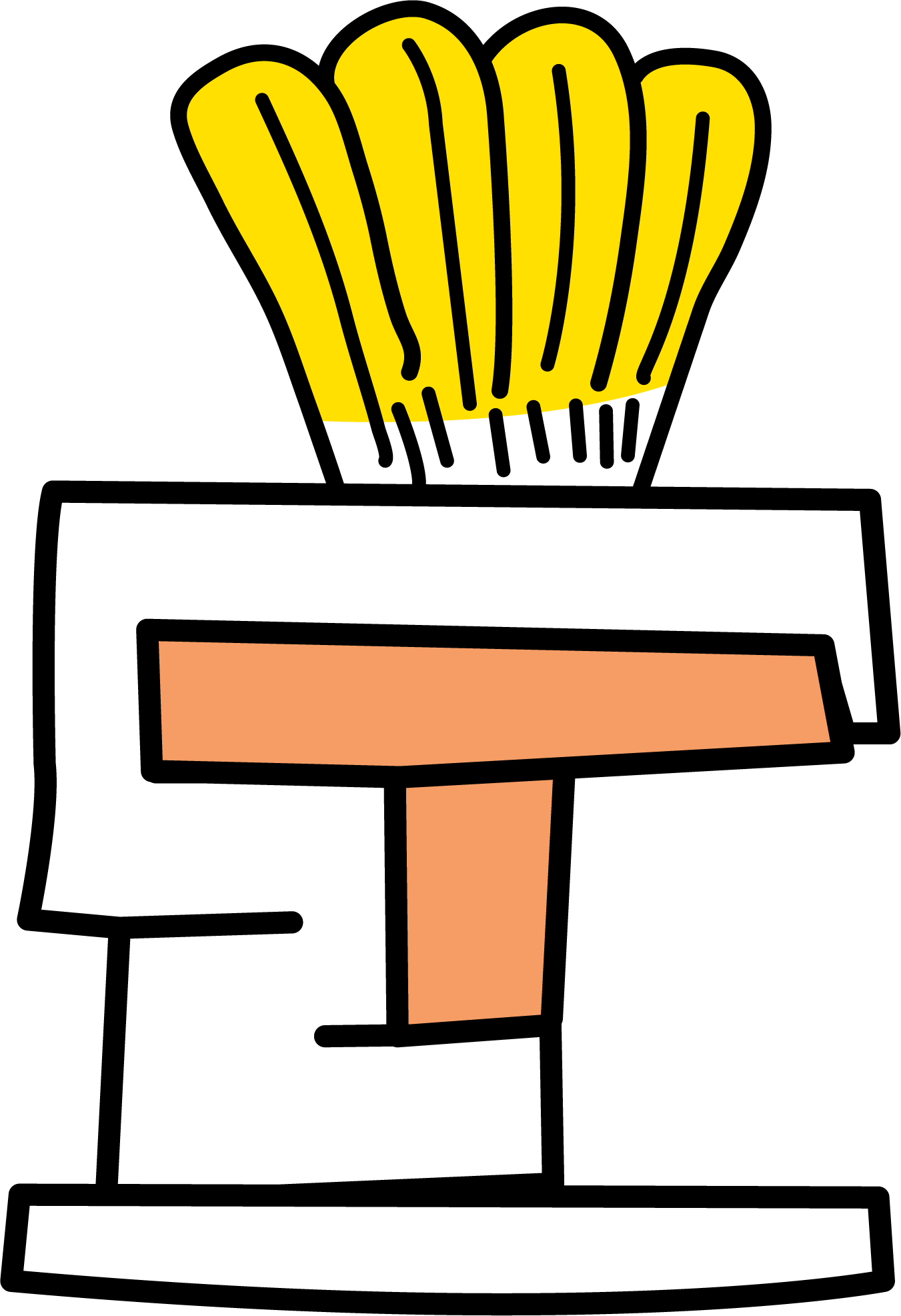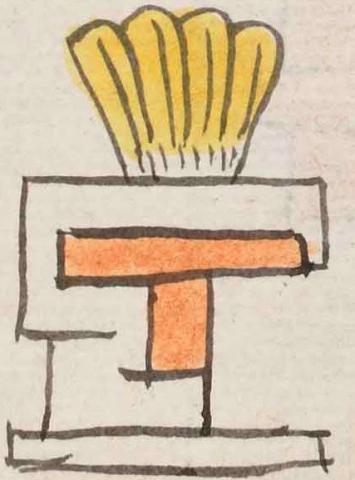Cozotlan (Mdz20r)
This compound glyph for the place name Cozotlan includes two prominent features. One is a cluster of at least four feathers from a yellow parrot (cozotl). The other is a building that conveys a sense of place, implying the locative -tlan. The feathers are full, long feathers, standing upright, and they are colored mostly yellow, but with white at the base. The building is what is traditionally interpreted as a calli (usually, a house). It is shown in a profile view, facing to the viewer's right. It is rectangular and painted white, with the exception of the t-shaped entrance, which has terracotta-colored beams.
Stephanie Wood
There has been some confusion about which bird provided the yellow feathers, either a parrot or a turtledove, but note the other yellow, feathered items below right. None of them has the stem of coco- (from cocotli, turtledove).
Stephanie Wood
coçotlan. puo
Cozotlan, pueblo
Stephanie Wood
c. 1541, or by 1553 at the latest
Stephanie Wood

Ellis Shing Nobles
The cozotl, yellow parrot feathers, are at the top, but there are no teeth below that, which would provide the phonetics for the locative suffix [tlan(tli)]. Instead, we have the calli (house, building) visually but silently standing in for the locative suffix.
buildings, houses, feathers, yellow, edificios, casas, plumas, amarillo, nombres de lugares

cozo(tl), yellow parrot, https://nahuatl.wired-humanities.org/content/cozotl
-tlan (locative suffix), place of, https://nahuatl.wired-humanities.org/content/tlan
"Cozo Place" [Frances Karttunen, unpublished manuscript, used here with her permission.]
"Where There Are Many Turtledoves" (Berdan and Anawalt, 1992, vol. 1, p. 180)
"El Lugar del Loro Amarillo"
Stephanie Wood
Codex Mendoza, folio 20 recto, https://digital.bodleian.ox.ac.uk/objects/2fea788e-2aa2-4f08-b6d9-648c00..., image 50 of 188.
The Bodleian Libraries, University of Oxford, hold the original manuscript, the MS. Arch. Selden. A. 1. This image is published here under the UK Creative Commons, “Attribution-NonCommercial-ShareAlike 3.0 License” (CC-BY-NC-SA 3.0).




